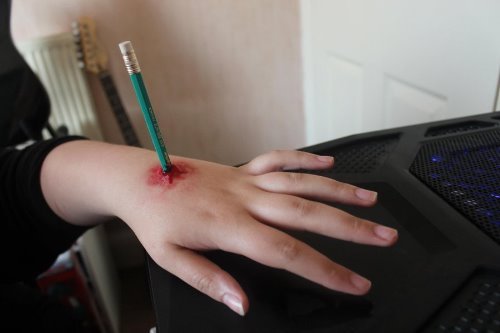Blood transfusion is one of those potentially life-saving procedures that we take for granted in major trauma patients. Even the ATLS course recommends it for patients presenting in hemorrhagic shock. Unfortunately, it took quite a bit of work in the late 1800’s and early 1900’s to figure out how to keep from killing people when giving them someone else’s blood.
We now have very good systems for making sure that blood is safe, and that the appropriate antigens and antibodies are compatible in order to avoid serious transfusion reactions. Unfortunately, a lot of that goes out the door when a trauma professional needs blood now! A crossmatch takes about 45 minutes, and even making sure the major blood types match (ABO and Rh) takes about 15 minutes once you factor in paperwork and transport times.
All trauma centers now have access to “universal donor” blood. In the purest sense, this is O- blood, since it has no antigens that can activate the recipient’s immune system. However, O- comprises only 6.6% of the US blood supply, and it is frequently in short supply in smaller hospitals. An alternative is to use O+ blood, which is much more readily available (37.4% of the US supply).
But doesn’t this pose a risk of hemolytic transfusion reaction to patients who are Rh-? And what about women of childbearing age developing Rh antibodies that could cause hemolytic disease of the newborn? The Maryland Shocktrauma Center published a paper that showed some interesting results. It was a retrospective review of the 5,623 patients they saw in the year 2000 (!). A total of 480 of those patients received 5,203 units of blood.
Here are the interesting factoids:
- 161 received uncrossmatched O blood
- There were no acute transfusion reactions
- 14 patients lived to receive full crossmatch with Rh
- 4 females received O- and none developed antibodies
- Of the 10 males who received O+ blood, only 1 developed persistent Rh antibodies. One other had transient antibodies that disappeared at later testing.
Bottom line: Although it looks big, this is really just a small series. However, it does agree with other similar studies (listed in the bibliography of this paper). The use of uncrossmatched blood in general, and O+ blood specificially for males does appear to be safe. The low number of Rh antibody conversions may be due to the immunosuppression that goes along with both major trauma and blood transfusion. Consideration should still be given to administering RhoGam to males who are found to be Rh- after receiving Rh+ blood.
Related post:
Reference: Safety of Uncrossmatched Type-O Red Cells for Resuscitation from Hemorrhagic Shock. J Trauma 59(6):1445-1449, 2005.



